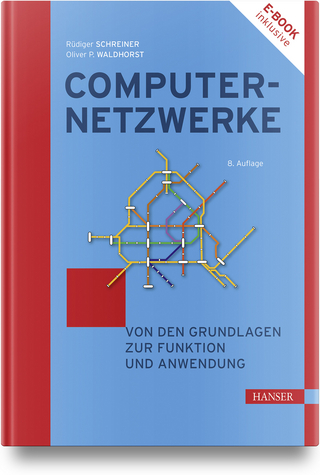
IP for 3G
John Wiley & Sons Inc (Verlag)
978-0-471-48697-8 (ISBN)
What is an 'all-IP' network? What difference will IP networking make to 3G services?
Third Generation (3G) mobile offers access to broadband multimedia services - and in the future most of these, even voice and video, will be IP-based. However 3G networks are not based on IP technologies, rather they are an evolution from existing 2G networks. Much work needs to be done to IP QoS and mobility protocols and architectures for them to be able to provide the functionality 3G requires.
IP for 3G gives a comprehensive overview of 3G networking functionality and examines how IP protocols can be developed to provide some of the basic building blocks of a mobile system (mobility, QoS and call control)
Features:
* Clear explanation of how 3G works at the network level.
* Review of IP protocol and architectural principles.
* Extensive review, classification and analysis of IP mobility protocols - macro and micro- including IPv6.
* Analysis of IP QoS protocols and proposed solutions for mobile networks.
* Tutorial on SIP (Session Initiation Protocol) and how SIP can be used for multimedia session control.
* Description of latest UMTS developments - including Release 5.
* Discussion of 4G networks - what does 4G mean?
IP for 3G will appeal to mobile telecommunications and network engineers who want to know about future developments as well as system designers and developers. Students and academics on postgraduate courses related to telecommunications, especially 3G networking or IP protocols, will find this text ideal supplementary reading, only assuming a general knowledge of GSM and general networking principles.
Dave Wisely and Philip Eardley are the authors of IP for 3G: Networking Technologies for Mobile Communications, published by Wiley.
Acknowledgements.
1. Introduction.
Scope of the Book.
IP for 3G.
Engineering Reasons for 'IP for 3G'.
Economic Reasons for 'IP for 3G '.
Conclusion.
References.
2. An Introduction to 3G Networks.
Introduction.
Mobile Standards.
History of 3G.
Spectrum The 'Fuel 'of Mobile Systems.
UMTS Network Overview.
UMTS Network Details.
UMTS Radio Access Network (UTRAN).
cdma2000 Packet Core Network.
Conclusion.
References.
Further reading.
3. An Introduction to IP Networks.
Introduction.
A Brief History of IP.
IP Standardisation Process.
IP Design Principles.
Making the Internet Work.
Security.
The Future.
Further reading.
4. Multimedia Service Support and Session Management.
Introduction.
Session Management.
Current Status.
Session Initiation Protocols.
SIP in Detail.
SIP in Use.
Conclusions.
Further reading.
5. IP Mobility.
Scope.
Introduction -What is IP Mobility?.
SIP -A Protocolfor Personal Mobility.
Introduction to Terminal Mobility.
Mobile IP -A Solution for Terminal Macromobility.
TerminalMicromobility.
Comparison of Micromobility Protocols.
Other Aspects of Terminal Mobility.
Conclusions.
Further reading.
6. Quality of Service.
Introduction.
Current IP QoS Mechanisms.
Key Elements of a QoS Mechanism.
Proposed Internet QoS Mechanisms.
IP QoS for 3G -A Possible Solution.
Conclusion.
Further reading.
7. IP for 3G.
Introduction.
Designing an All-IP Network.
Advantages of an All-IP Network.
3G Network Evolution.
UMTS Beyond R5.
Wireless LANs.
Fourth Generation Mobile.
Further reading.
Abbreviations.
Index.
| Erscheint lt. Verlag | 2.8.2002 |
|---|---|
| Verlagsort | New York |
| Sprache | englisch |
| Maße | 193 x 240 mm |
| Gewicht | 765 g |
| Themenwelt | Mathematik / Informatik ► Informatik ► Netzwerke |
| Technik ► Elektrotechnik / Energietechnik | |
| Technik ► Nachrichtentechnik | |
| ISBN-10 | 0-471-48697-3 / 0471486973 |
| ISBN-13 | 978-0-471-48697-8 / 9780471486978 |
| Zustand | Neuware |
| Haben Sie eine Frage zum Produkt? |
aus dem Bereich


